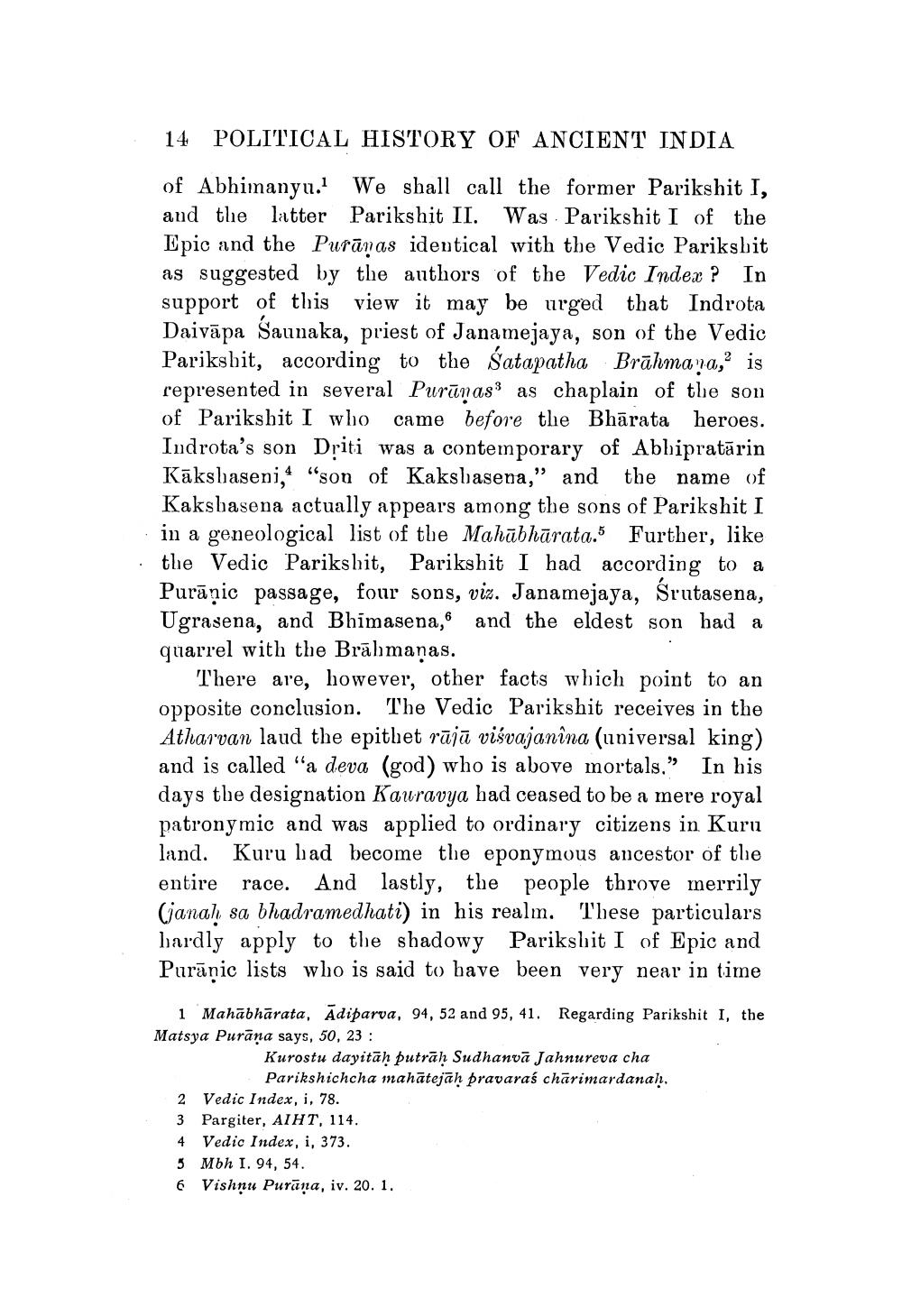________________
14 POLITICAL HISTORY OF ANCIENT INDIA of Abhimanyu. We shall call the former Parikshit I, and the latter Parikshit II. Was Parikshit I of the Epic and the Purānas identical with the Vedic Pariksbit as suggested by the authors of the Vedic Index ? In support of this view it may be urged that Indrota Daivāpa Saunaka, priest of Janamejaya, son of the Vedic Parikshit, according to the “atapatha Brāhmaya, is represented in several Purūņas as chaplain of the son of Parikshit I who came before the Bhārata heroes. Indrota's son Driti was a contemporary of Abhipratārin Kākshaseni, “son of Kaksbasena," and the name of Kaksbasena actually appears among the sons of Parikshit I in a geneological list of the Mahābhārata. Further, like the Vedic Parikshit, Parikshit I had according to a Purāņic passage, four sons, viz. Janamejaya, śrutasena, Ugrasena, and Bhimasena, and the eldest son had a quarrel with the Brālımaņas.
There are, however, other facts which point to an opposite conclusion. The Vedic Parikshit receives in the Atharvan laud the epithet rājā visvajanîna (universal king) and is called "a deva (god) who is above mortals.” In his days the designation Kauravya had ceased to be a mere royal patronymic and was applied to ordinary citizens in Kuru land. Kuru liad become the eponymous ancestor of the entire race. And lastly, the people throve merrily (janah sa bhadramedhati) in his realm. These particulars hardly apply to the shadowy Parikshit I of Epic and Purānic lists who is said to have been very near in time
1 Mahābhārata, Adiparva, 94, 52 and 95, 41. Regarding Parikshit I, the Matsya Purana says, 50, 23 :
Kurostu dayitah putrāh Sudhanvā Jahnureva cha
Parikshichcha mahātejāh pravaraś chārimardanah, 2 Vedic Index, i, 78. 3 Pargiter, AIHT, 114. 4 Vedic Index, i, 373. 5 Mbh I. 94, 54. 6 Vishnu Purūna, iv. 20.1.




